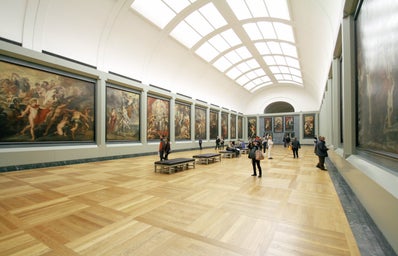Rhodes College’s 2017 Alumni weekend was full of bridging gaps between the old and the new. It was a jam packed weekend, between the alumni-student mixer in the Office of Student Leadership, and the mingling that the events of homecoming weekend allowed. But, what stood out the most to me was Alexandra Carter’s artist talk, in relation to her participation in Clough-Hanson Gallery’s latest exhibition, “In Conversation: Celebrating 100 Years of Women at Rhodes”, which focuses on women’s contributions to the college throughout the past hundred years. Carter, a Rhodes graduate and visual artist based in Los Angeles, manages to bridge gaps between the old and new herself. According to Joel Parsons, director of the Clough-Hanson Gallery and organizer of the talk, her work “feels really alive to and responsive to history.” Carter bends the connotations we hold with everyday objects through the aid of performance, history, and….cranberries?
Although Carter is a globe trotter of sorts (she attended grad school at Goldsmith’s in London, and has held artist residencies in India, Italy, and Austria), she hails from Massachusetts, where she grew up on a cranberry farm. Carter puts a focus on her roots in her work, and allows for the culture and geography from her hometown to influence her. The experimentation with cranberries as a medium (whether it be cranberry juice from the grocery store, or cranberry puree from a blender) began during her time at the Maryland Institute College of Art. Their fluidity, and the varied experiences from viewer to viewer when taken out of context, sparked her interest in the fruit. Although Carter’s mind intended the red forms surrounding the subject to be cranberries, a viewer could take it in a totally different direction, a popular assumption would be an association with the red dots being blood.
Following suit with the use of unlikely materials in her art, she has found that old linens from antique stores and thrift shops make for an excellent canvas. Carter finds an interest in the sense of history that the linens provide, and the intimacy they hold with the body. Another canvas she enjoys using is drafting film. The non-porous surface allows for liquid substances to pool over top, which emphasizes its respective fluidity and allows free movement across the film.
Carter’s interest in free movement also continues into the more figurative sense. One can deduce that her work has a continual theme in expression and emotion, specifically in femininity. This focus on female hysteria is intentional, as part of her curriculum in grad school at Goldsmith’s had a strong research component. Through this research, she discovered Unica Zürn, a German visual artist and poet. Zürn, a sufferer of psychotic episodes and undiagnosed schizophrenic, illustrated first-hand experiences of mental illness in her works. Although Carter’s earlier works showcased her interest in bodies, her research on Zürn sparked the more centralized interest in bodies during outburst, and bodies losing sense of boundary.
During her art residency in India, Carter immersed herself in the culture and found a fascination with ritual and Hindu Mythology. This concept of craft sent her into a period of more abstract works. She also began to venture into digital art by taking old photos she found in historical archives and photo shopping them cryptically into her works. One can look at the photos below and wonder which elements of the work are figments of Carter’s imagination or real life images of the past.
Although Carter’s work has spanned all over the globe and ranges in influence, one thing has stayed certain, which was a lack of background. The images are so specific, and the lack of background allows for the focus to be on the main forms. This specificity lets the images exist on their own, and therefore leaves room for the viewer to create their own context, and to ask themselves what the work means to them.
“In Conversation: Celebrating 100 Years of Women at Rhodes” is currently open in the Clough-Hanson Gallery.


